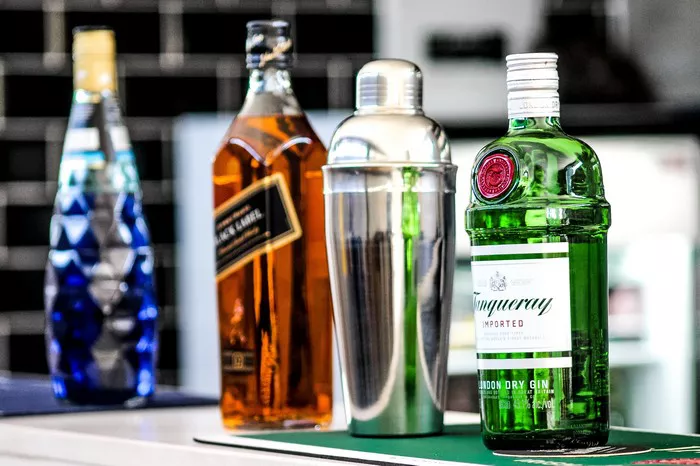Tequila, synonymous with fiestas, celebrations, and a touch of Mexican charm, is a beloved spirit enjoyed by people all around the world. This iconic liquor has a rich history and a distinct production process that gives it its unique character. But what exactly is tequila made with, and how does it transform from humble ingredients into the fiery elixir that ignites countless gatherings? Let’s take a journey through the heart of tequila production, from the agave fields to the bottle, and explore the ingredients that define this spirited libation.
1. Agave: The Heart and Soul
At the core of tequila production lies the agave plant, often referred to as the “heart” of tequila. The agave plant, specifically the blue agave variety (Agave tequilana Weber), is the foundation of this spirit’s distinct flavor profile. Unlike other spirits that use grains, agave serves as both the source of fermentable sugars and the unique taste that defines tequila.
2. Harvesting Agave: A Labor-Intensive Task
The journey begins with the careful cultivation and harvesting of mature agave plants. These plants, which take several years to reach maturity, are known for their robust leaves and spiky appearance. Skilled jimadores, or agave harvesters, use specialized tools to extract the agave’s piña, the large, pineapple-like core that contains the sweet juices essential for tequila production.
3. Cooking: Transforming Starches into Sugars
Once the agave piñas are harvested, they undergo a process known as cooking. Cooking serves two vital purposes: it softens the piñas to extract their juices, and it converts the starches within the agave into fermentable sugars. This conversion is achieved through either traditional methods involving stone ovens or more modern methods involving autoclaves.
4. Crushing: Extracting the Nectar
The softened and sweetened agave piñas are then crushed to extract their precious juices, also known as aguamiel, or “honey water.” Traditional distilleries often use a large stone wheel called a tahona, pulled by horses or machinery, to crush the agave. Modern distilleries utilize mechanical crushers for efficiency. This step is crucial for extracting the flavors that will ultimately define the tequila.
5. Fermentation: Transforming Sugars into Alcohol
The extracted agave juices are rich in fermentable sugars. These sugars become the foundation for the fermentation process, where yeast is introduced to convert the sugars into alcohol. The fermentation process contributes significantly to the tequila’s flavor and aroma. It’s important to note that the type of yeast used and the duration of fermentation play a role in shaping the final product.
6. Distillation: Refining the Elixir
After fermentation, the liquid undergoes distillation to separate the alcohol from impurities and water. Tequila is typically distilled twice, but some premium brands opt for additional distillations to achieve a smoother and more refined spirit. The distillation process not only concentrates the alcohol content but also helps capture the nuanced flavors of the agave.
7. Aging: Maturation and Flavor Enhancement
While not all tequilas undergo aging, many premium and ultra-premium tequilas are aged to enhance their flavors and develop complexity. Aging occurs in oak barrels, which contribute color, flavor, and aroma to the tequila. Reposado tequila is aged for a minimum of two months, añejo for at least one year, and extra añejo for a minimum of three years.
8. Bottling: Presenting the Finished Product
After aging, the tequila is filtered, sometimes diluted with water to achieve the desired alcohol content, and then bottled. The finished product is a result of the agave’s journey from the fields to the distillery and finally into the bottle. The label will indicate whether the tequila is a blanco (unaged), reposado, añejo, or extra añejo, allowing consumers to select their preferred style.
9. Varieties of Tequila: A Spectrum of Flavors
Tequila’s diverse range of flavors is a testament to the different types of tequila produced. Blanco tequila, also known as silver or white tequila, is typically unaged and retains the purest essence of the agave. Reposado tequila, with its subtle aging, offers a balance between the agave’s raw character and the oak’s influence. Añejo tequila develops deeper complexities through extended aging, while extra añejo tequila showcases the rich interplay of agave and oak over an extended period.
10. Flavored and Infused Tequilas: Modern Twists
In recent years, the world of tequila has seen the emergence of flavored and infused variations that appeal to a broader audience. These offerings infuse tequila with flavors such as fruit, spice, and even herbs, expanding the possibilities for creative cocktails.
Conclusion
Tequila’s journey from agave fields to bottle is a harmonious blend of natural ingredients, careful craftsmanship, and time-honored traditions. The agave plant serves as the heart and soul of this spirited elixir, contributing its unique flavor profile and character to every drop. As you sip on a glass of tequila, whether enjoying its raw essence or savoring its aged complexities, take a moment to appreciate the craftsmanship and dedication that goes into each bottle. From the hands that harvest the agave to the distilleries that transform it, tequila is a testament to the beauty of tradition and innovation in the world of spirits.


